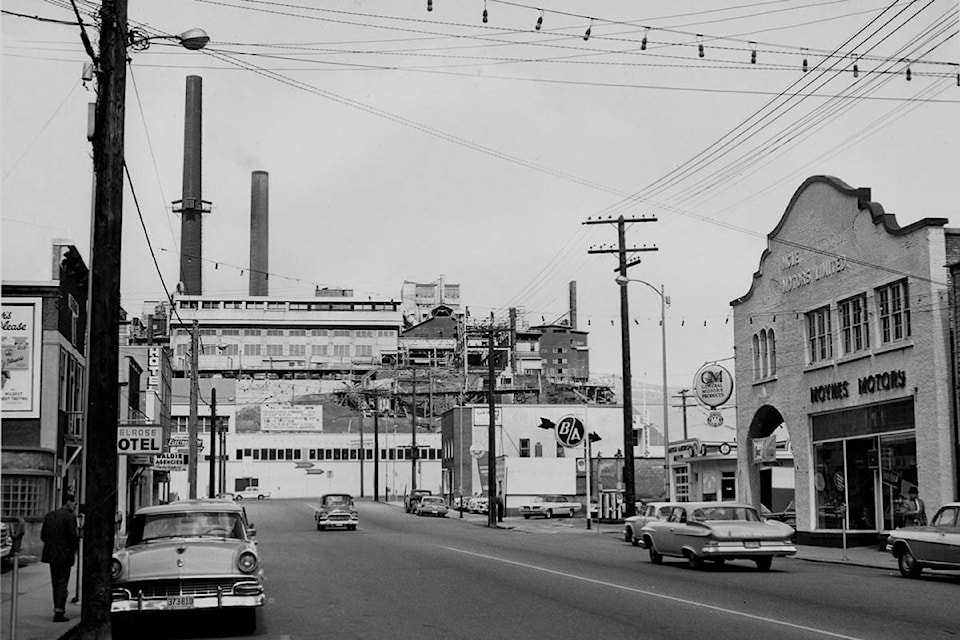One of the most recognizable scenes in the Silver City is the view from Bay Avenue looking toward the smelter.
Of course this image has evolved ever since pioneers first landed in the City of Trail 125 years ago, so the idea of looking back at Bay Avenue development presents a compelling mini-series for our Trail Blazers feature.
Previous: Trail Blazers
Previous: Trail Blazers
This is the third in a series of photos from the Trail Museum and Archives. Both black and white images date back to the post-war boom of the 1950s and 1960s, or the decades that in Canada were, in large part, years of economic stability and prosperity.
The first photo submitted by Jesslyn Jarvis, collections coordinator, shows Bay Avenue in the late 1950s with the Trail Memorial Centre and the stacks as the backdrop.
The billboard above the memorial centre (then Cominco Arena) advertises popular cultural events of the day - a Square Dance Jamboree, a Student Hard Time Dance, and roller skating.
Under the ornate roof line on the right side of the photo is Moynes Motors, and just beyond that a British American dealer and service station.
Across the street is the Melrose Hotel, which was built in 1912, damaged and repaired in the 1920s, and finally demolished in 1963.
Next door to the Melrose is Waldie Agencies Insurance.
“Note the light bulbs hanging over the street in several places,” Jarvis explains. “Colourful triangular pennant flags were also often used to decorate Bay Avenue in this era.”
Other 1950s milestones include the incorporation of the Village of Warfield and the start of a new housing project in Sunningdale for veterans of the Second World War (more on the latter in a future Trail Blazers story).
The second photo shows Trail in the 1960s, which Jarvis points out, was a decade that began with a bang.
For starters, in 1961, a new shore-to-shore marvel - the Victoria Street Bridge - was ready for use as a modern-day Columbia River crossing.
And while a new east-to-west link certainly must have been most welcome that year, it likely wasn’t as exciting or inspirational as this - the Trail Smoke Eaters won the World Championships for a second time (the first time was in 1939).
Back to the photo, the year is 1961.
“This photo shows a gravel causeway on Bay Avenue, built to allow traffic access to the old bridge and East Trail during the flood,” Jarvis explained.
In fact, to the left of the photo, flood water can be seen pooled in front of the Esso station.
“A policeman is directing traffic,” Jarvis concluded. “Trail employed its own police force until 1949, then policing duties were turned over to the Provincial Police and later the RCMP.”
newsroom@trailtimes.ca
Like us on Facebook and follow us on Twitter
